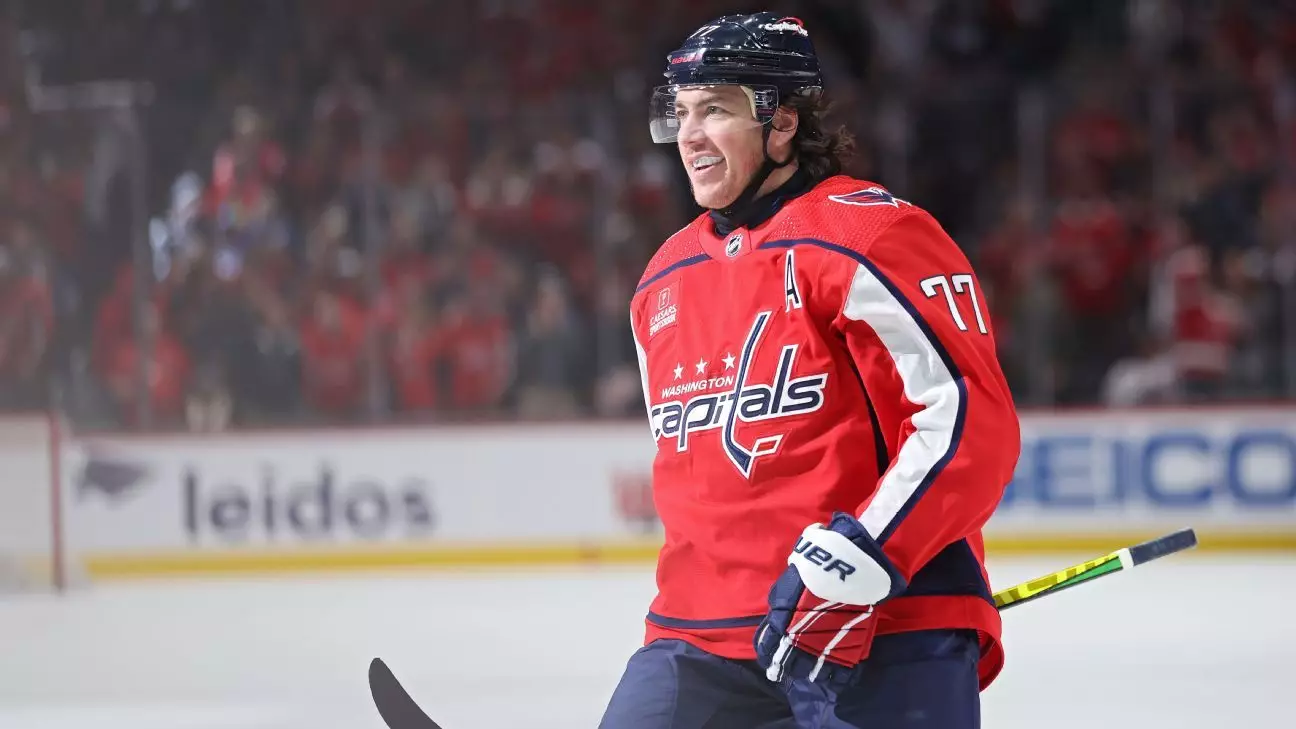The hockey world was recently hit with news that Washington Capitals forward T.J. Oshie will be placed on long-term injured reserve for the 2024-25 NHL season due to a chronic back condition. This announcement, which came following a medical examination at the start of the Capitals‘ training camp, highlights the ongoing struggles Oshie has faced with his health. While this move marks a significant moment in his career, it also prompts a deeper examination of the nuances surrounding player injuries in professional sports, the impact on franchise strategy, and the difficult crossroads athletes often face.
The Long Battle with Injury
Oshie’s back problems are not new; they have been a persistent issue that has disrupted his ability to remain in the Capitals’ lineup consistently over the years. Limited to just 52 games last season and failing to meet the 60-game mark since the 2019-20 season, it is clear how these injuries have affected both his performance and the team’s overall strategy. The Capitals, currently undergoing a youth movement in their roster, are beginning to prioritize the integration of younger talent, which makes Oshie’s contributions feel increasingly limited.
The emotional toll that injuries can take on athletes is not to be underestimated. Oshie’s statement about the challenges faced last season hints at a larger struggle that goes beyond physical limitations. The burden of being unable to perform at his usual level weighs heavily on him, both personally and professionally. His desire to contribute to the team is evident in his commitment to supporting his teammates even while sidelined. It calls into question the often-unseen burdens athletes carry when injuries force them out of action.
The severity of Oshie’s situation is illustrated by the debilitating nature of his chronic back problem. Reports indicate that he has experienced pain so intense that simple daily tasks, like playing with his children, have become overwhelming. Such personal revelations pull back the curtain on the realities of professional sports, where the physical toll can lead to compromises in quality of life. It is easy to forget that behind the athletic prowess exhibited on the ice, players often endure significant sacrifices in their personal lives.
Oshie’s approach to treatment has included both minor procedures and consultations with specialists, yet the results have been insufficient. His candid acknowledgment of the limitations of these interventions reinforces the complexity of managing chronic injuries. The journey to recovery is seldom linear, and for many athletes, the fear of not returning to their previous form looms large. As Oshie himself remarked, the struggle is compounded not only by physical issues, but by the emotional strain they create.
A Team and a Legacy
Washington Capitals General Manager Chris Patrick’s public support of Oshie emphasizes the culture fostered within the team. By prioritizing Oshie’s wellbeing over immediate success, the franchise demonstrates a commitment to its players that transcends on-ice performance. Oshie’s leadership and contributions to the team are acknowledged, signifying his importance in ways that extend beyond statistics.
His lingering presence on the ice after the Capitals‘ playoff exit raises questions about his future in the sport. At 37 years old, Oshie stands at a pivotal crossroads, where thoughts of retirement may start entering the conversation. The love for the game is apparent, but as he noted, uncertainties about physical readiness complicate any plans for a comeback. Enthusiasm for one more season clashes with the realities of his condition.
The decision to place T.J. Oshie on long-term injured reserve is more than just a strategic move for the Capitals; it encapsulates the harsh realities of professional sports and the human experiences behind them. As he navigates this challenging time, both he and the team must consider not just the immediate tactical implications, but also the long-term effect on his health and life post-hockey. Oshie’s journey reflects a greater narrative of athletes grappling with adversity, the pursuit of recovery, and the search for fulfillment beyond the rink. The hockey community watches closely, hoping for a resolution that honors both his legacy and well-being.


Napsat komentář